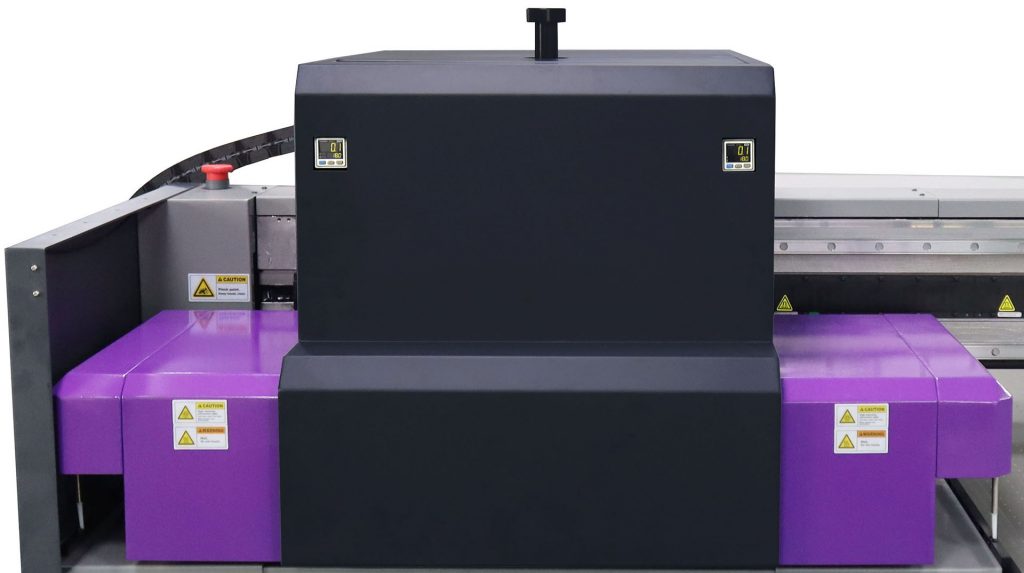UV Flatbed Printer: Achieving High-Quality Prints on Demand
UV Flatbed Printer: Achieving High-Quality Prints on Demand
In the realm of digital printing, UV flatbed printers have emerged as a game-changer, offering unparalleled versatility, efficiency, and print quality. These machines have revolutionized the way industries approach on-demand printing, enabling businesses to produce high-quality prints on a wide range of materials swiftly and economically. This article delves into the intricacies of UV flatbed printers, exploring their technology, applications, advantages, and how they facilitate achieving high-quality prints on demand.

Understanding UV Flatbed Printer Technology
UV flatbed printers utilize ultraviolet (UV) curing technology to instantly dry ink as it is applied to the substrate. This process involves the use of UV-curable inks that solidify when exposed to UV light. The printer’s flatbed design allows for the printing of materials of various shapes, sizes, and thicknesses, making it a versatile choice for diverse applications.
The printing process begins with the loading of the material onto the flatbed, which is then secured in place. The printer head, equipped with UV-LED lamps, moves across the material, depositing ink droplets in precise patterns. Immediately after ink deposition, the UV lamps emit high-intensity light that cures the ink, resulting in a fully dried and durable print. This instant curing eliminates the need for additional drying time, enabling faster turnaround and reduced risk of ink smudging or bleeding.
Applications of UV Flatbed Printers
The versatility of UV flatbed printers makes them suitable for a wide array of applications across various industries. Here are some key sectors where these printers have made a significant impact:
Advertising and Signage: UV flatbed printers can print directly onto rigid materials such as acrylic, PVC, glass, and metal, making them ideal for creating high-quality signs, posters, and display graphics.
Packaging Industry: The ability to print on flexible and rigid packaging materials, including cardboard, plastic, and even some types of metallized films, allows for the creation of custom packaging designs with vivid colors and intricate details.
Interior Decoration: UV flatbed printers can print on materials like wood, ceramic, and glass, enabling the production of unique decorative items such as customized furniture, tiles, and wall art.
Prototyping and Manufacturing: These printers are used in product design and development to create prototypes quickly and cost-effectively, allowing for rapid iteration and testing.
Personalized Gifts and Merchandise: With the capability to print on a variety of surfaces, UV flatbed printers are popular for creating personalized items such as phone cases, mugs, and clothing.
Advantages of UV Flatbed Printers
High Print Quality: UV-curable inks offer exceptional color vibrancy, sharpness, and durability, resulting in prints that can rival traditional printing methods.
Versatility: The ability to print on a wide range of materials and thicknesses makes UV flatbed printers a flexible solution for various applications.
Fast and Efficient: Instant ink curing eliminates the need for lengthy drying periods, enabling faster print speeds and reduced production time.
Environmental Benefits: UV-curable inks are generally more environmentally friendly than solvent-based inks, emitting lower levels of volatile organic compounds (VOCs).
Cost-Effective: On-demand printing reduces waste and storage costs associated with bulk printing, making it a cost-effective solution for businesses.
Achieving High-Quality Prints on Demand
To achieve high-quality prints on demand using a UV flatbed printer, several key factors must be considered:
Ink and Material Compatibility: Ensuring that the UV-curable ink is compatible with the substrate is crucial for achieving optimal print quality. Different materials may require specific ink formulations to ensure proper adhesion and curing.
Color Management: Accurate color reproduction is essential for high-quality prints. Calibrating the printer and using color management software can help ensure consistent and vibrant colors.
Print Resolution: Higher print resolutions result in sharper images and finer details. Investing in a UV flatbed printer with high DPI (dots per inch) capabilities can significantly enhance print quality.
Proper Print Bed Preparation: Ensuring the print bed is clean, level, and appropriately prepared for the material being printed on is vital for achieving consistent and high-quality results.
Operator Training: Adequate training for operators on printer usage, ink handling, and maintenance procedures is essential for maximizing print quality and printer longevity.
Conclusion
UV flatbed printers have transformed the printing industry by offering a versatile, efficient, and high-quality printing solution for on-demand applications. Their ability to print on a wide range of materials, combined with the instant curing capabilities of UV-curable inks, makes them an invaluable tool for businesses seeking to produce customized, durable prints quickly and cost-effectively. As technology continues to advance, UV flatbed printers will likely play an increasingly prominent role in driving innovation and efficiency across various industries, further solidifying their position as a go-to solution for achieving high-quality prints on demand.
